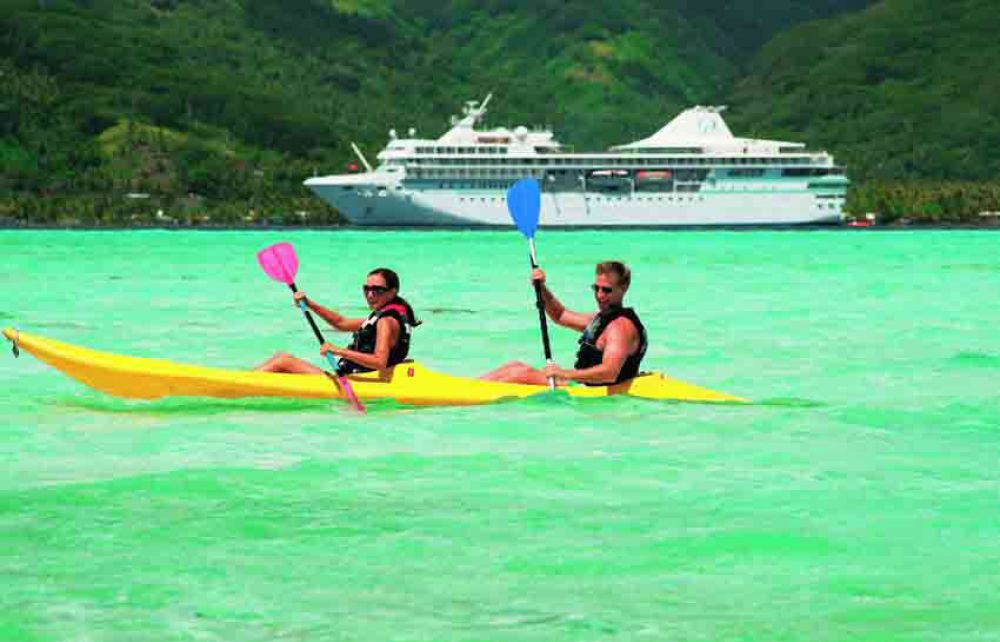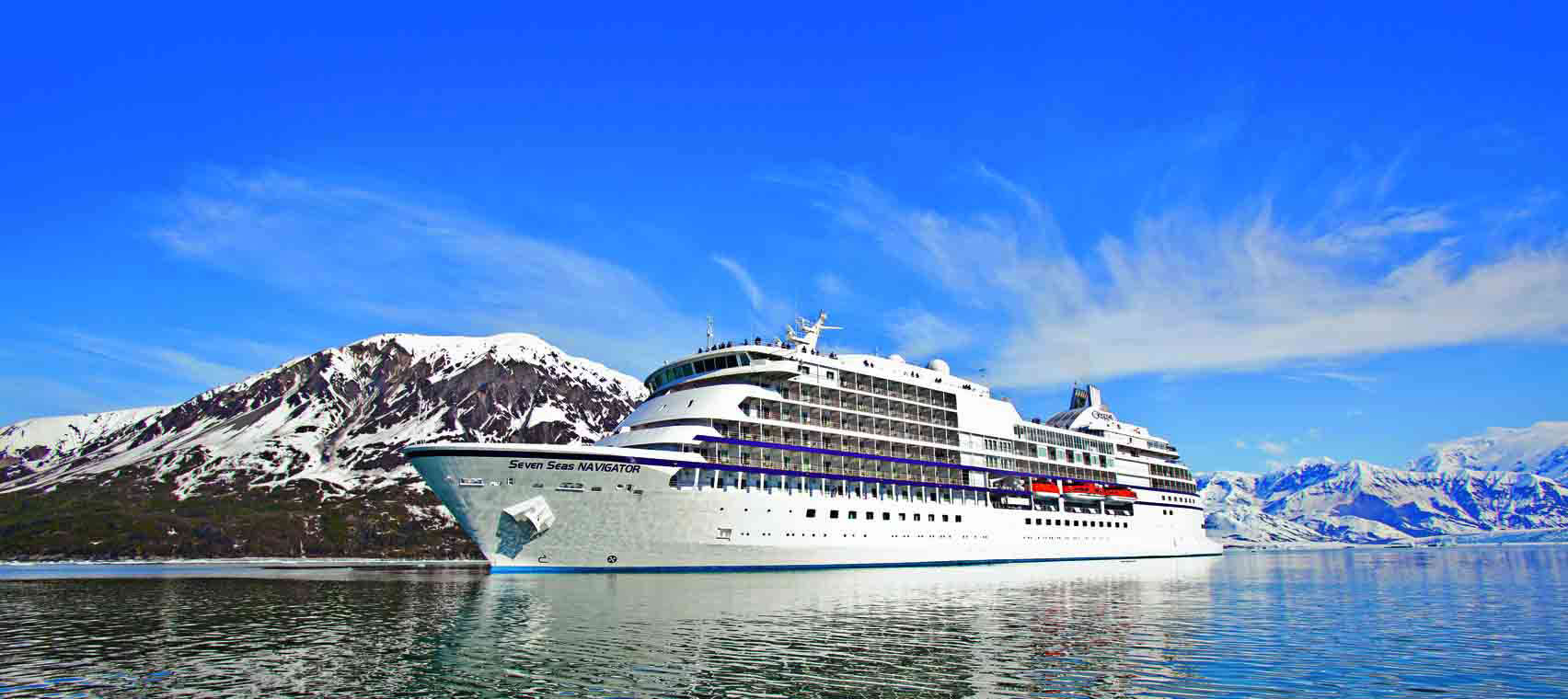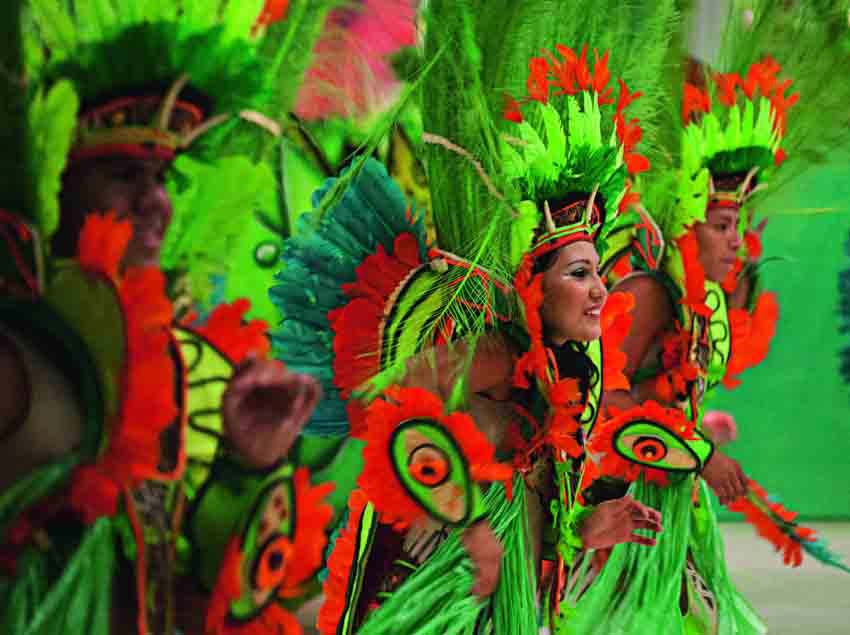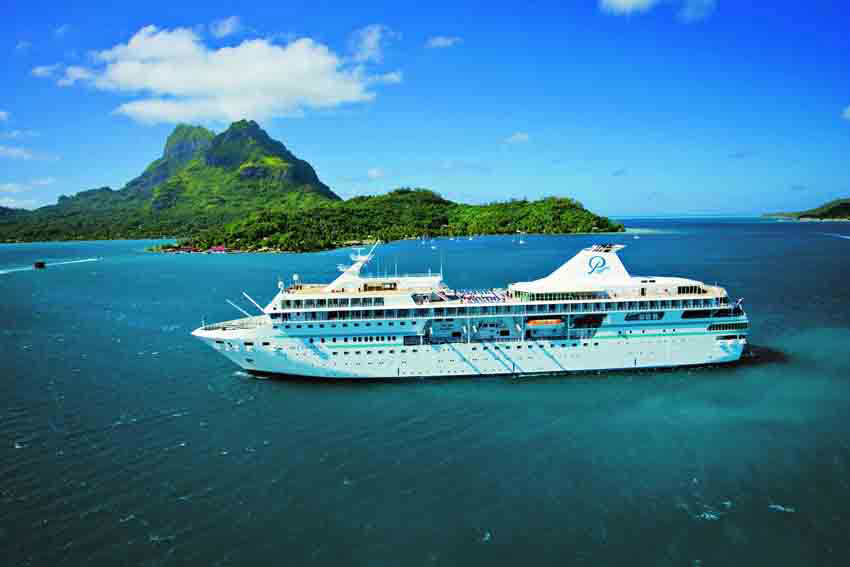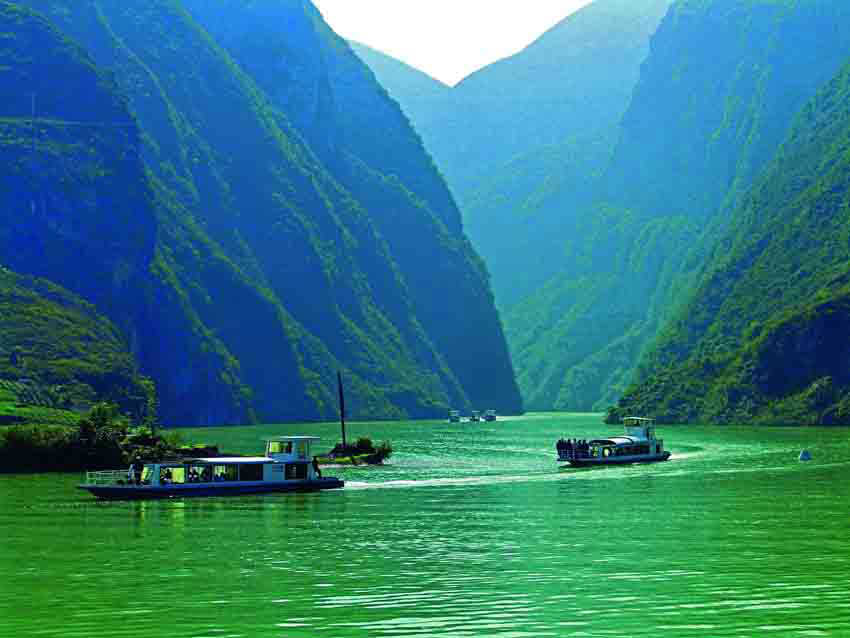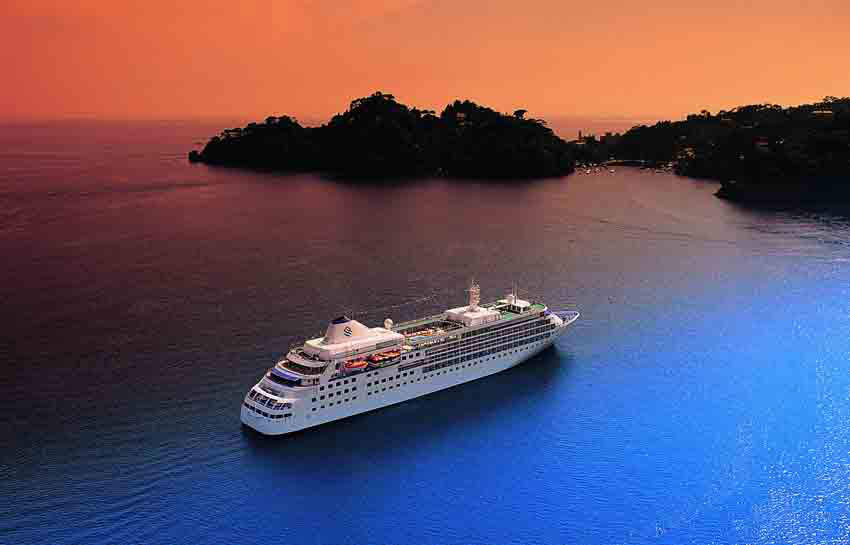Islands of French Polynesia French Polynesia
French Polynesia is the siren of the South Pacific. Born of coral and fire, this romantic cluster of islands is caressed by an exotic mist. They are not just spectacular, they are breathtaking. And to pile rapture on top of ecstasy, the Tahitian Islands are very French in outlook and have the joie de vivre to prove it.
Early European explorers couldn’t believe their eyes, for they had sailed into a veritable Garden of Eden. These islands are the Elysium of everyone’s dreams: palm trees wave calmly in the trade winds; seas sparkle a shade of blue rarely seen in northern latitudes. The captain of the infamous HMS Bounty declared Tahiti as the ‘finest island in the world’, and when the French artist Paul Gauguin arrived here in 1891 he said: ‘The landscape, with its violent, pure colours, dazzled and blinded me.’ Tahiti and the Society Islands are best explored by ship. How appropriate, then, that visitors can cruise aboard an ineffable vessel bearing the name Paul Gauguin.
It’s no surprise that the Bali Hai scenes from South Pacific were filmed in Moorea, which lies just off the western coastline of Papeete – the capital of Tahiti. Shaped like a butterfly, it’s a diorama of jagged green mountains rimmed by white sand beaches. The captain drops anchor in Cook’s Bay where the most recent version of Mutiny on the Bounty was filmed. Nearby at Opunohu, the turquoise lagoon is framed by hibiscus, chenille and seductively swaying palm trees.
Bora Bora: even the name evokes the essence of these captivating islands with heady scents of jasmine, the snow-white tiare Tahiti flower, and the promise of paradise found. The volcanic peaks are edged by a silvery rim of beach encircled by coral atolls and cerulean seas. Passengers can enjoy the sensuous island lifestyle paddling, snorkelling or drifting in a glass-bottomed boat while looking at the angelfish, triggerfish, surgeon-fish and endless corals. French Polynesia may be a long way off but when it comes to tropical cruising in this über-chic archipelago, even superlatives are inadequate.

